Ancient Weapons – Using the Spear and Atlatl
Amongst weapons, there are few which have truly passed the test of time. Firearms, the weapon of choice today, are relatively new on the scene and have only been used for a few centuries. At the other extreme of the timescale, we have weapons like knives, spears, and bows which have survived millennia of continued use, although their design has changed throughout the years.
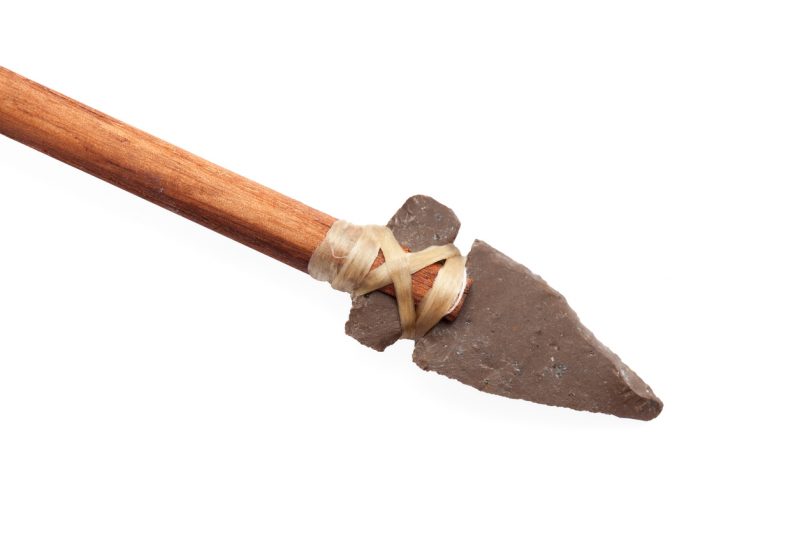
Yet, in the event of a TEOTWAWKI event, there will be many who will be unable to use firearms as their weapon of choice. While some of us may have a decent stockpile of ammo sitting in our homes, most people won’t. So using guns, even for hunting, will attract unwanted attention and send out the message that you are in better shape than others. That’s not a message that you would want to send out.
So, even if we do have the necessary firearms and ammunition to take care of ourselves for the next 50 years, we may still want to look to alternative weapons for defense and hunting – saving our guns and ammo for times when we really need them.

While the spear isn’t commonly in use today, except amongst primitive tribes, it has one of the oldest histories of any weapon and has passed through many iterations as warfare has changed over time. Used as both a melee weapon (up close and personal) and a thrown weapon, the spear has shown itself to be incredibly versatile. It is also one of the easiest and cheapest weapons to produce, which has probably had a lot to do with its popularity throughout the centuries.

Spears were in use even before bows, with possibly only knives, rocks, and clubs being used before them. While later iterations of the spear had bronze or even iron heads, the earliest ones were merely a pointed wooden shaft that had had the point hardened in a fire.
The Physics of the Atlatl

If we look at the early history of the spear, we encounter one of the most amazing innovations in the history of weapons: the atlatl. This simple weapon turned the spear into a powerful ranging weapon – adding power, speed, range, and accuracy to what was already the most powerful weapon of the day.
At its most basic, an atlatl is an extension of the throwing arm – essentially giving the thrower a longer arm. It was probably invented because someone recognized that their taller friend, who had longer arms, could throw their spear faster and farther. In an effort to overcome this disadvantage, they came up with a very effective way of making their own arms longer.
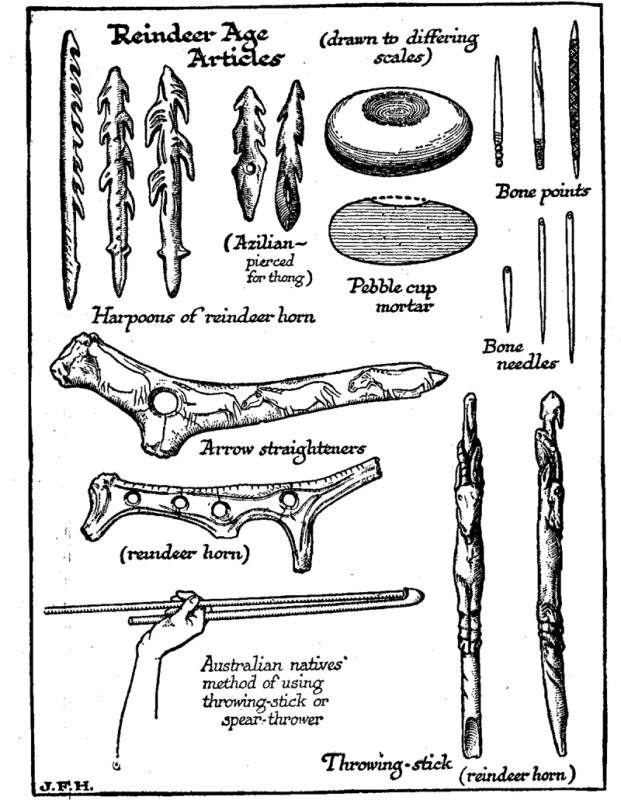
A longer arm provides more angular momentum for the same force. Try looking at it this way: start with a disk and draw concentric circles around it – one near the center, one at the edge, and one halfway in-between. Mark a single point on each circle. Then mount that disk on an axle and spin it.
When that disk spins, all three circles are rotating at the same speed. However, the point on the outer circle has to travel much farther to go around the axle than the point on the middle circle, and that circle has to move farther than the point on the inner circle. So, while all three are moving at the same speed when measured in revolutions per minute (RPM), they are moving at different speeds when measured in feet per second (FPS).
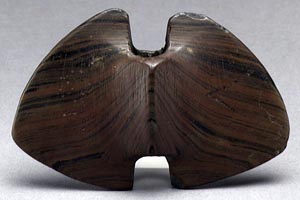
Something attached to the point on the outer circle will be moving much faster in feet per second than something attached to the point on the inner circle. If both of those things broke free from the disk at the same time, the one attached to the point on the outer circle would fly faster and farther than the other, assuming they were the same size and weight.
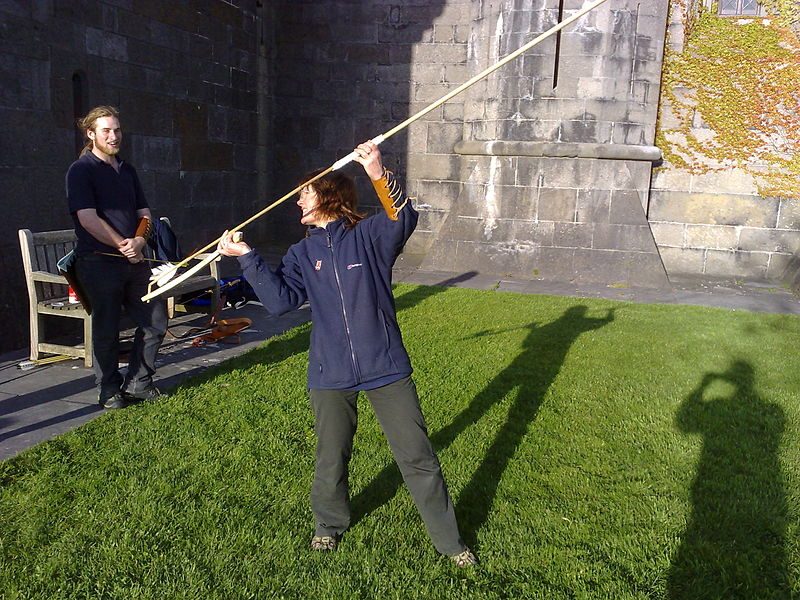
Now let’s take that example and apply it to the arm of the spear thrower. The axle is the shoulder. The point on the inner circle is the elbow, the point on the middle circle is the hand, and the point on the outer circle is the end of an atlatl. With the same amount of power applied to throw the spear, the end of the atlatl will travel farther and faster to the release point of the spear. That will translate directly into a faster “muzzle velocity,” giving greater speed and range.
This is what made the atlatl such an amazing invention. While simple and easily made, the atlatl increased the “muzzle velocity” of the spear, more correctly stated as the “escape velocity,” which in turn increases its range and penetrating power when it arrives at its intended target.
Making an Atlatl & Spear
The spear used with an atlatl is often referred to as a dart and looks more like an oversized arrow than what most of us would consider a spear to be. These darts are typically four to five feet long and roughly ½ inch in diameter. Like an arrow, they have fletchings, and ancient ones had an arrowhead chipped or knapped from obsidian or flint.
The atlatl itself was carved out of a tree branch. While they could vary considerably in style, the main parts of the design are a handle with a groove in it for the dart or spear to sit in and a hook at one end. The overall length varies but they tend to be about 20 to 22 inches long.
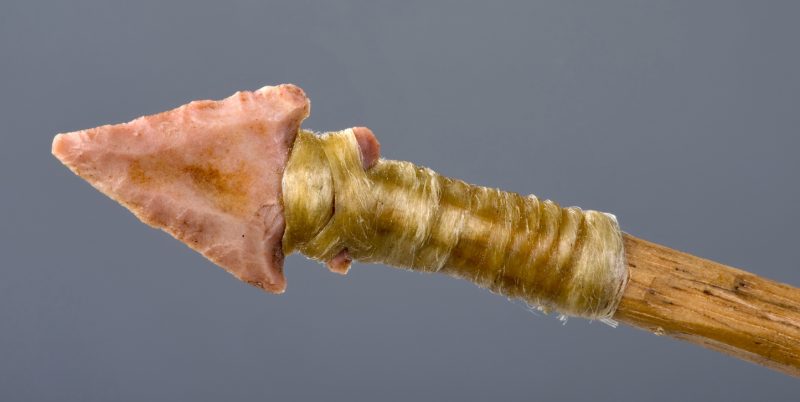
Some users attached a small stone, about half the size of a fist, to the middle of the atlatl to act as a counterweight and to stabilize it. If this was done, it was attached to the bottom side, opposite the groove, so that it would not get in the way of the spear’s travel.
The handle of the atlatl was made so that it would be a comfortable size for the user to wrap their hand around – in a fist with the tips of the thumb and index finger free. A dart or spear would be loaded into the atlatl with the back end of the dart pressed up against the hook and the shaft of the dart set into the groove. It was held in place by the tips of the index finger and thumb.

The throwing of the spear was instinctive as there were no “gun sights” that could be used. However, with practice, a hunter or warrior could become quite adept and quite accurate in the use of the atlatl.





